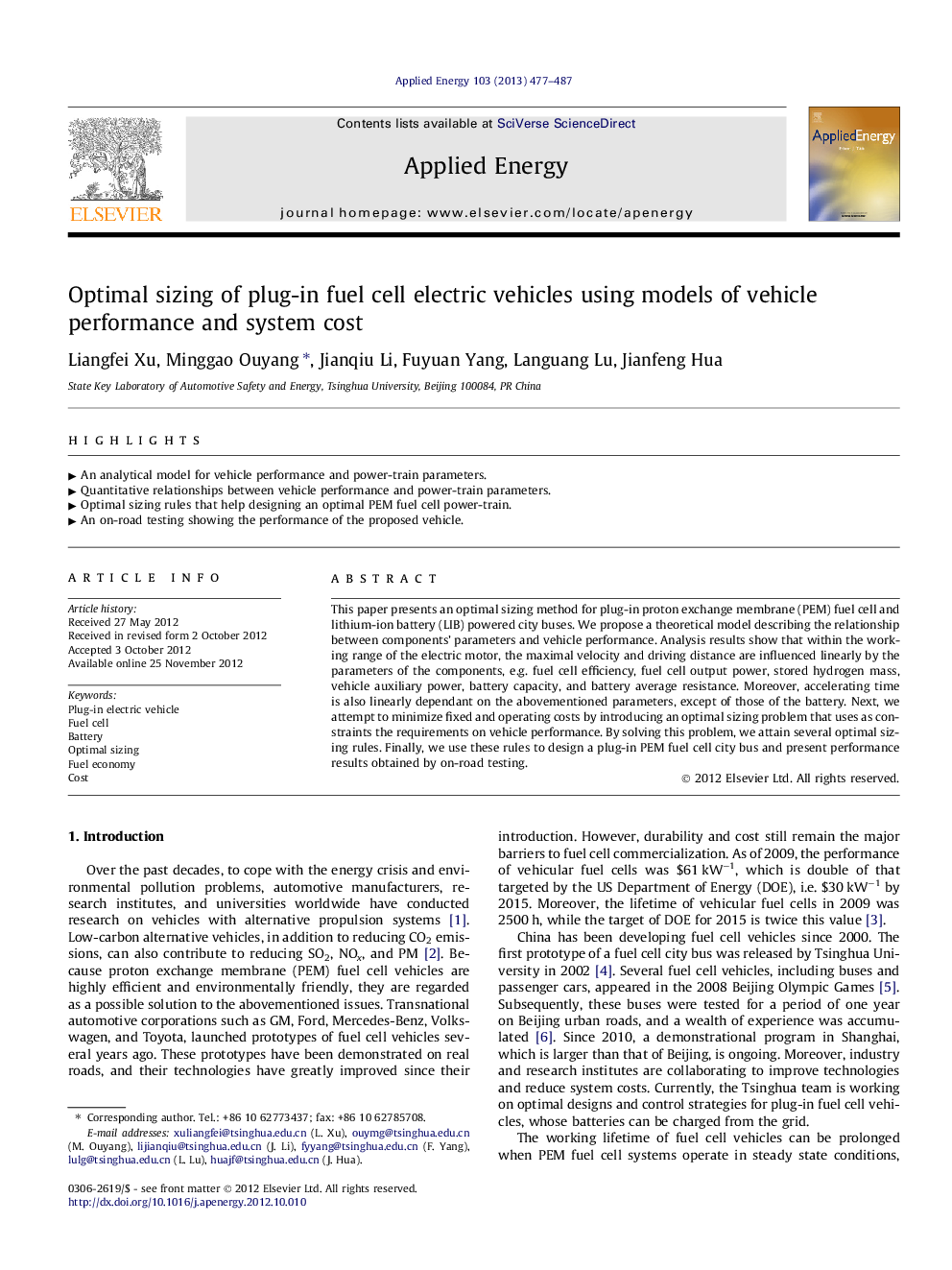| Article ID | Journal | Published Year | Pages | File Type |
|---|---|---|---|---|
| 243020 | Applied Energy | 2013 | 11 Pages |
This paper presents an optimal sizing method for plug-in proton exchange membrane (PEM) fuel cell and lithium-ion battery (LIB) powered city buses. We propose a theoretical model describing the relationship between components’ parameters and vehicle performance. Analysis results show that within the working range of the electric motor, the maximal velocity and driving distance are influenced linearly by the parameters of the components, e.g. fuel cell efficiency, fuel cell output power, stored hydrogen mass, vehicle auxiliary power, battery capacity, and battery average resistance. Moreover, accelerating time is also linearly dependant on the abovementioned parameters, except of those of the battery. Next, we attempt to minimize fixed and operating costs by introducing an optimal sizing problem that uses as constraints the requirements on vehicle performance. By solving this problem, we attain several optimal sizing rules. Finally, we use these rules to design a plug-in PEM fuel cell city bus and present performance results obtained by on-road testing.
► An analytical model for vehicle performance and power-train parameters. ► Quantitative relationships between vehicle performance and power-train parameters. ► Optimal sizing rules that help designing an optimal PEM fuel cell power-train. ► An on-road testing showing the performance of the proposed vehicle.
